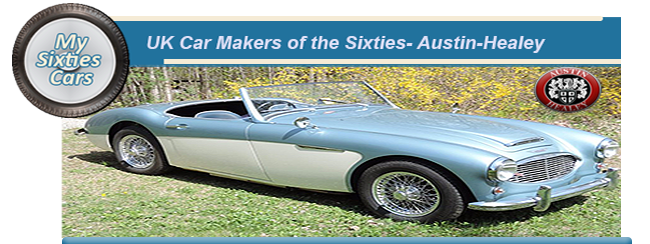
In October 1952 the Healey Motor Company of Warwick made their debut, displaying a glamorous 2.6-litre model at the Earl's Court Motor Show.
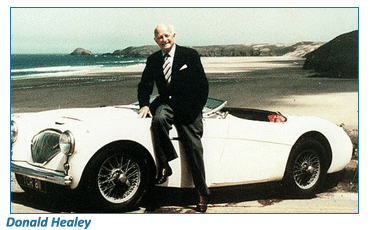 So great was the new model's attraction that the small recently established company with extremely limited production facilities were completely swamped with orders which they had no chance of fulfilling.
So great was the new model's attraction that the small recently established company with extremely limited production facilities were completely swamped with orders which they had no chance of fulfilling.
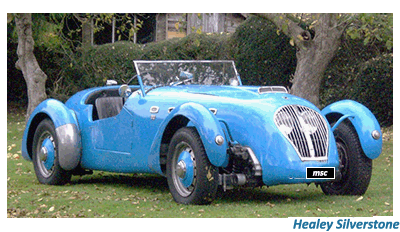 Historically, Austin stepped in to help with production amenities, and the new model eventually appeared as the Austin-Healey 100. From that time on the combine never looked back in sports car mass production, becoming one of the country's leading car exporters.
Historically, Austin stepped in to help with production amenities, and the new model eventually appeared as the Austin-Healey 100. From that time on the combine never looked back in sports car mass production, becoming one of the country's leading car exporters.
The marque entered the 'sixties with the AN5 'bug-eyed' Sprite and the BN7/BT7 two- and two-/four-seat Healey 3000 machines.
The attractive little Sprite had been modified in 1959 with a more easily erected and stowed hood, an effective hood/windscreen seal, a modified radiator and stronger wheels; among optional equipment available for the little two-seater was a useful hard-top.
The under-square 948-cc four-cylinder ohv A-Series engine was boosted by two SU H1 carburettors, that ironically produced only 42.5 bhp net at 5,000 rpm. A Borg & Beck SDP clutch of 61-inch diameter transmitted drive to a four-speed gearbox.
![]()
Independent coil-and-wishbone front suspension was used, with a live rear axle sprung on quarter-elliptic springs with radius arm location.
Girling lever-arm shock absorbers were fitted, and there were tiny but effective Lockheed 7-inch diameter drum brakes all round/
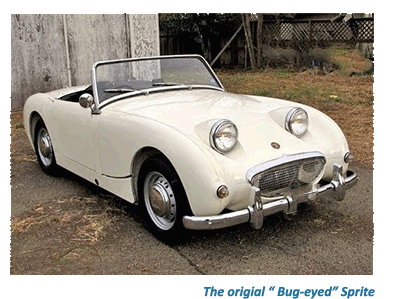 Aware that the Bug –Eye could not rely on its “Fifties Charm” indefinitely, BMC introduced the Mark II version of the Sprite at the end of May 1961.
Aware that the Bug –Eye could not rely on its “Fifties Charm” indefinitely, BMC introduced the Mark II version of the Sprite at the end of May 1961.
Powered by the same 948 cc engine, boosted by larger twin 1 1⁄4 inch SU carburettors, a combination that increased the Sprite's power to a respectable 46.5 bhp.
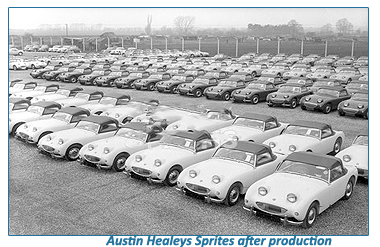 To make for a smoother driving experience, a close-ratio gearbox was fitted.
To make for a smoother driving experience, a close-ratio gearbox was fitted.
More importantly, the Sprite was given a complete body makeover, with the Bug Eyes becoming a thing of the past, now placed in the wings, to either side of a full-width grille. The Mark II now boasted a totally conventional bonnet.
The Mark II’s rear was also totally restyled, strongly influenced by the soon to be released MGB open tourer. The revamp now meant that the Sprite boasted an opening boot lid and conventional rear bumper bar.
The 3000, on the other hand, remained mostly unchanged through the Sixties, with all the attributes of a 'traditional' sports car.
It was fast, easily handled in a muscular sort of way and was available as a pure two-seater or, with an enlarged cockpit area, as a two-/four-seater.
This format was in the manner of the Sunbeam Alpine, with room for two small children or one transverse-seated adult.
![]()
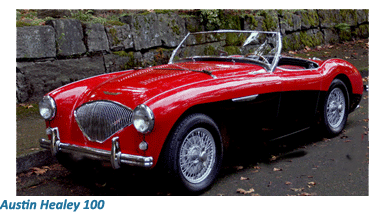 Major change came to the Sprite in October 1966 with the replacement of the 1100 Mark III by the 1275 Mark IV model, producing a healthy 65 bhp at 6,000 rpm, with 72 lb ft torque at 3,000 rpm.
Major change came to the Sprite in October 1966 with the replacement of the 1100 Mark III by the 1275 Mark IV model, producing a healthy 65 bhp at 6,000 rpm, with 72 lb ft torque at 3,000 rpm.
Separate brake and clutch master cylinders appeared, and the folding hood was now an integral, non-removable fixture and operated very well — proving extremely weather-proof.
These changes had their effect, meaning that both models continued to sell well throughout the remainder of the Sixties.
During the decade BMC made no attempt to add to the Healey range, and with the passing of the 3000 model, production of the traditional, masculine and rugged Austin-Healey that the UK and US motoring enthusiast was at an end.
The Mark IV Sprite was not destined to last that much longer, with BMC placing all of their marketing emphasis on the MG Midget, eventually discontinuing the Sprite in mid-1971.
In his long career Donald Healey had developed to become a major influencer in the UK motoring history, largely repsonsible for developing the “ mini sports roadster” sector.






